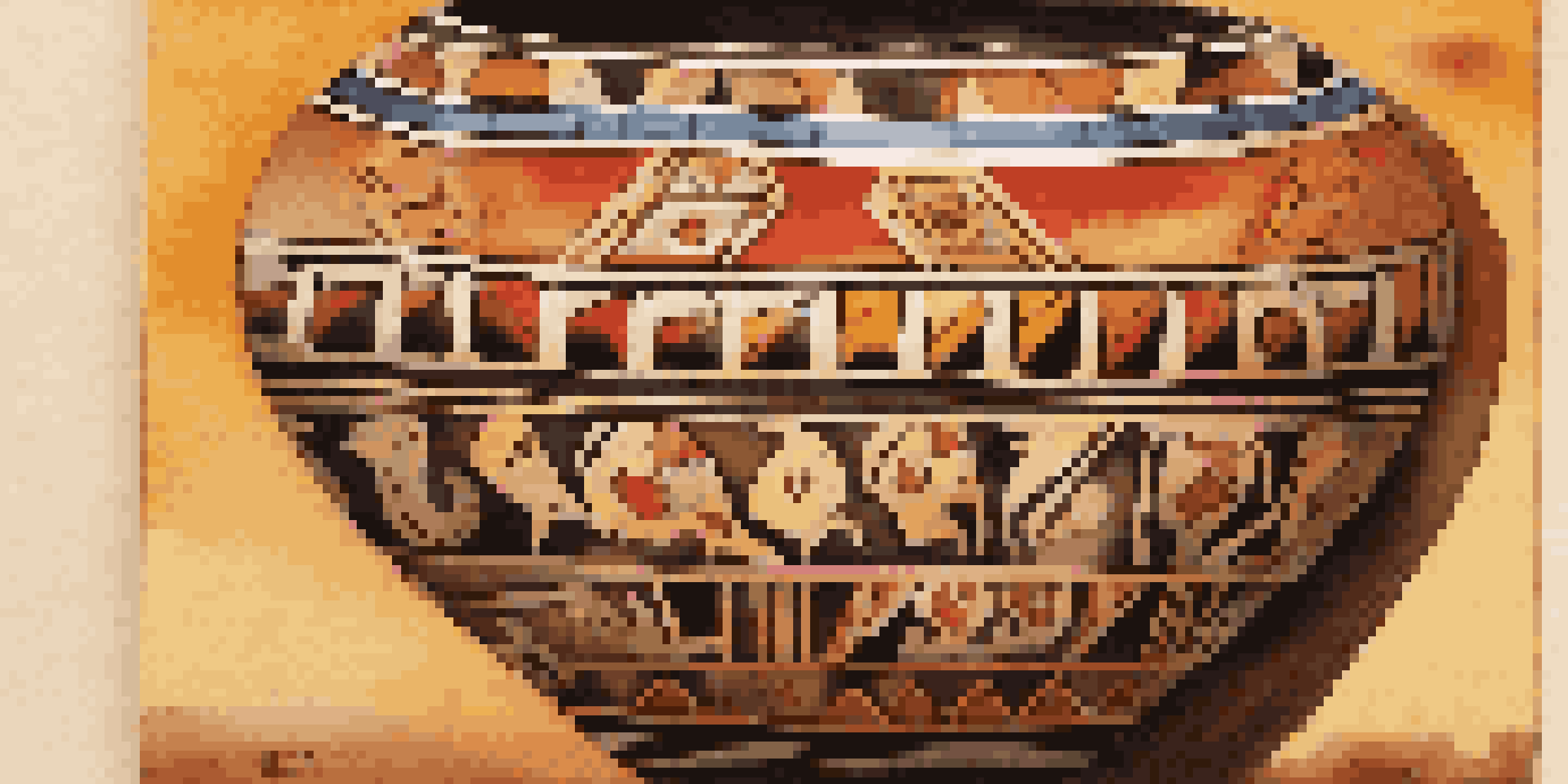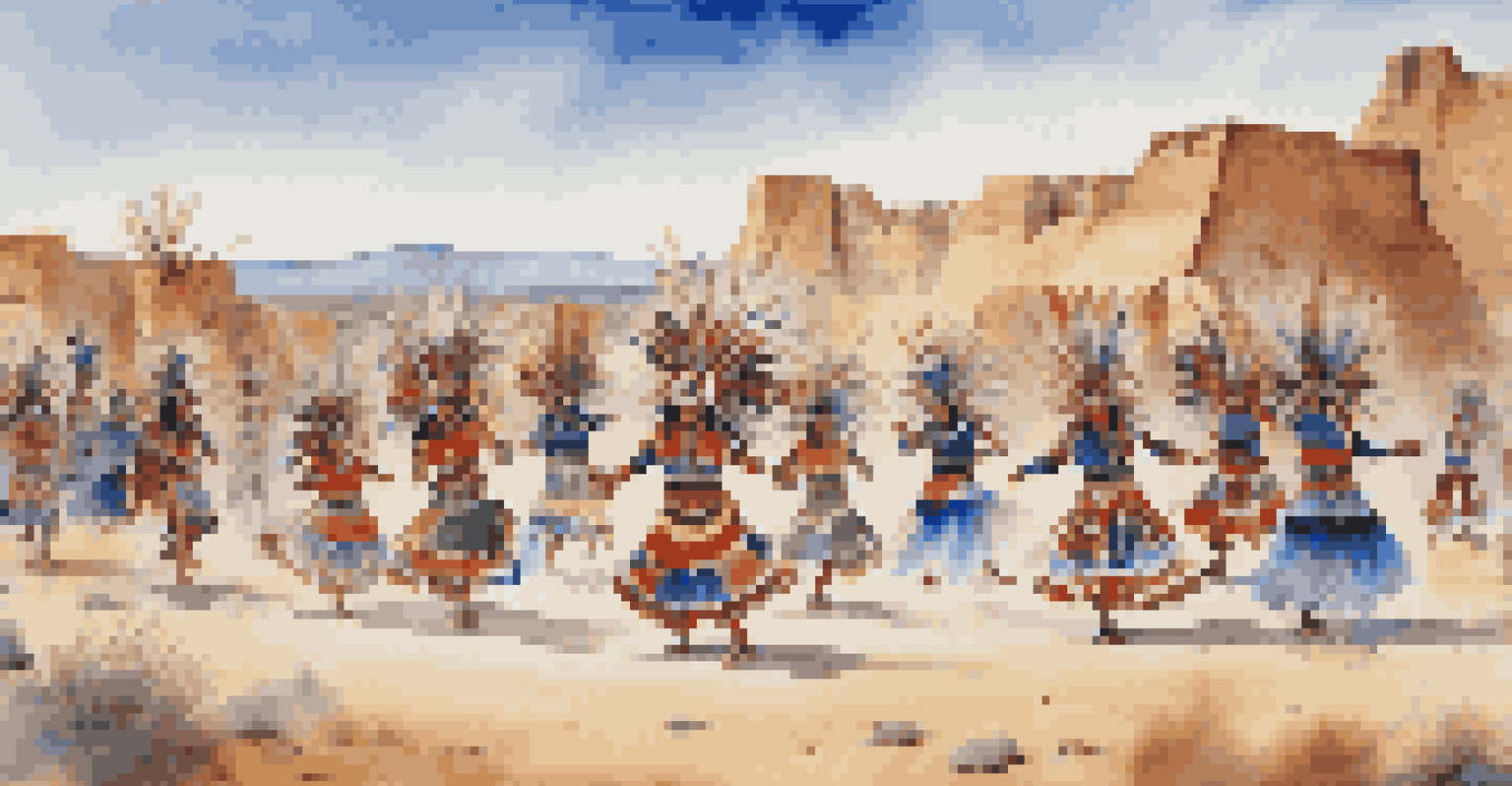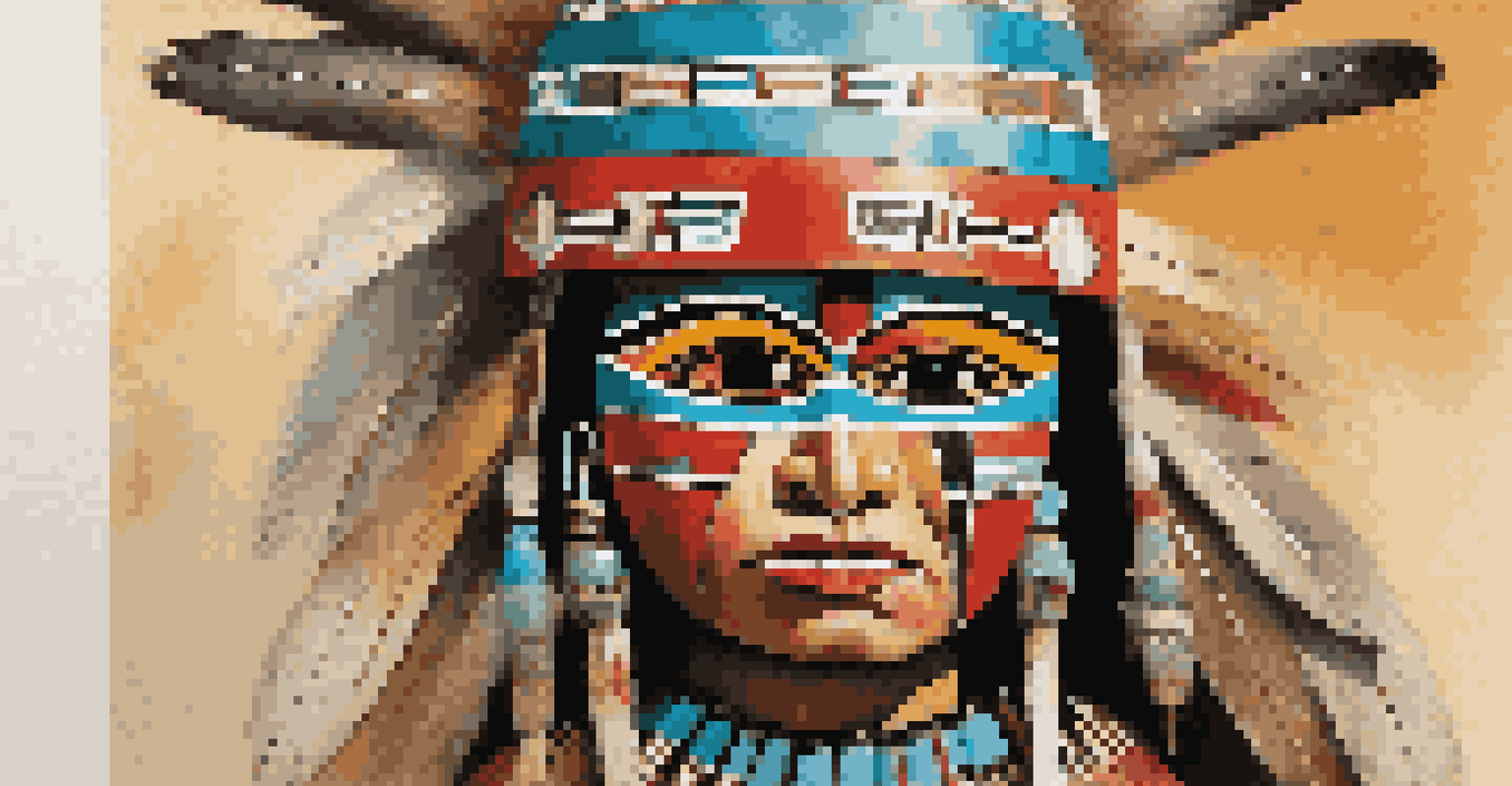Exploring the Role of Art in the Rituals of the Hopi Tribe

Understanding the Hopi Tribe and Their Cultural Heritage
The Hopi Tribe, a Native American group primarily residing in northeastern Arizona, is rich in cultural traditions that span centuries. Known for their deep connection to the land and spirituality, the Hopi people have maintained their customs despite the pressures of modernization. Their heritage is a tapestry of oral histories, rituals, and artistic expressions that reflect their worldview and communal values.
Art is the most beautiful of all lies; it is a bridge between the past and the future, between the sacred and the mundane.
Art plays a pivotal role in Hopi culture, serving not only as a means of creative expression but also as a vital component of their rituals. From intricate pottery to vibrant kachina dolls, each piece of art tells a story, often linked to significant cultural narratives and spiritual beliefs. This artistic expression is not merely decorative; it embodies the essence of Hopi spirituality and identity.
By understanding the Hopi Tribe's cultural heritage, we can appreciate how their art serves as a bridge between their past, present, and future. It is through these artistic mediums that the Hopi people communicate their values, teachings, and connection to the spiritual world, ensuring that their traditions continue to thrive.
The Significance of Rituals in Hopi Life
Rituals are central to the Hopi way of life, acting as a means of connecting with the spiritual realm and the natural world. These ceremonies, which range from agricultural celebrations to healing rituals, are deeply intertwined with the community's identity and survival. They serve to reinforce social bonds and cultural continuity among the Hopi people.

The rituals often incorporate elements of storytelling, dance, and music, creating a multisensory experience that captivates participants and observers alike. Each ritual is meticulously planned and executed, showcasing the tribe's rich traditions and respect for the natural cycles of life. This emphasis on ritual not only honors their ancestors but also instills a sense of purpose and belonging in the community.
Cultural Heritage Through Art
Hopi art serves as a vital expression of their cultural heritage, intertwining spirituality and community values.
Through these rituals, the Hopi Tribe emphasizes the importance of harmony with nature, a theme that resonates through their art as well. The intricate designs and symbols found in their artwork often reflect the stories and lessons learned from these rituals, making art an essential element of their cultural practices.
Artistic Expressions in Hopi Rituals: An Overview
Artistic expressions in Hopi rituals encompass a wide array of forms, including pottery, weaving, and painting. These art forms are not merely aesthetic; they carry deep spiritual meanings and purpose. For example, pottery is often decorated with symbols that represent natural elements, deities, and cultural narratives, making each piece a significant artifact.
The future belongs to those who believe in the beauty of their dreams.
One of the most notable artistic expressions is the creation of kachina dolls, which are used in rituals to represent various spirits and elements of nature. These dolls are intricately crafted and painted, each reflecting the unique story and significance of the spirit it embodies. Through the process of making these dolls, Hopi artisans connect with their spiritual beliefs and cultural heritage.
Additionally, the use of symbolism in Hopi art communicates messages that resonate with the community's values and teachings. Whether through the vibrant colors of their paintings or the meticulous patterns in their textiles, each artistic expression serves to convey a deeper understanding of their relationship with the world around them.
Symbolism and Meaning in Hopi Art
Symbolism is a cornerstone of Hopi art, as each element carries specific meanings tied to their culture and beliefs. For instance, the use of the color blue often symbolizes the sky and water, representing life and sustenance. These symbols are not arbitrary; they are steeped in the tribe's history and spiritual understanding.
Furthermore, the designs seen in Hopi pottery and textiles often depict natural elements, such as animals and plants, which play crucial roles in their rituals and daily lives. By incorporating these symbols into their art, the Hopi people honor the interconnectedness of all living things, reinforcing their commitment to stewardship of the earth.
Rituals Connect Community and Nature
Rituals play a crucial role in Hopi life, reinforcing social bonds and emphasizing harmony with the natural world.
Through their art, the Hopi Tribe encapsulates complex ideas and teachings, allowing them to communicate their values to both current and future generations. This rich tapestry of symbolism not only enhances the beauty of their artwork but also deepens the viewer's appreciation for the cultural significance behind each piece.
Rituals as a Form of Artistic Performance
In Hopi culture, rituals often transcend static art forms and manifest as dynamic performances that blend art, music, and dance. These vibrant ceremonies allow participants to embody their cultural narratives, showcasing the artistry involved in traditional dances and songs. Each performance is a celebration of identity, spirituality, and community cohesion.
During these rituals, performers wear elaborate costumes that are rich in symbolism and artistry. The intricate designs and colors of the costumes reflect the same values and stories found in their static artworks. This fusion of performance and visual art creates an immersive experience that captivates both participants and onlookers.
These artistic performances not only serve to honor their deities but also reinforce the community's cultural identity. They remind the Hopi people of their interconnectedness, both with one another and with the natural world, making each ritual an essential component of their artistic and spiritual expression.
Preservation of Hopi Art and Rituals in Modern Times
In recent years, the Hopi Tribe has faced challenges in preserving their art and rituals due to the pressures of contemporary society and globalization. However, many artisans are dedicated to keeping their traditions alive, often blending modern techniques with their ancestral practices. This fusion allows them to reach new audiences while still honoring their cultural roots.
Cultural events, workshops, and art shows have become vital platforms for showcasing Hopi art and rituals. By engaging both the community and outsiders, these events not only promote awareness of Hopi culture but also foster appreciation for their artistic expressions. They serve as a reminder of the importance of preserving these traditions for future generations.
Preservation Amid Modern Challenges
Despite modern pressures, the Hopi Tribe actively works to preserve their art and rituals, blending tradition with innovation.
Moreover, the digital age has opened new avenues for the Hopi Tribe to share their stories and art with a wider audience. Online platforms and social media allow them to connect with individuals who are interested in learning about their culture, ensuring that the significance of their art and rituals continues to resonate well into the future.
The Future of Hopi Art and Its Cultural Impact
As the Hopi Tribe navigates the complexities of modern life, the future of their art and rituals remains a topic of great importance. The younger generation is increasingly involved in learning traditional practices, ensuring that the knowledge is passed down and adapted to contemporary contexts. This involvement is crucial for the survival of their cultural identity.
While embracing new forms of artistic expression, the Hopi people are also committed to maintaining the integrity of their traditions. This balance between innovation and preservation fosters a vibrant cultural landscape that honors their ancestors while allowing for growth and evolution. Such adaptability is vital in a world that is constantly changing.

Ultimately, the impact of Hopi art and rituals extends beyond their community, offering insights into the importance of cultural heritage and connection to the land. As they continue to share their stories through art, the Hopi Tribe invites others to appreciate the beauty and significance of their traditions, ensuring that their legacy endures for generations to come.